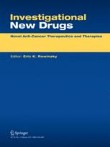
Αρχειοθήκη ιστολογίου
-
►
2023
(138)
- ► Φεβρουαρίου (74)
- ► Ιανουαρίου (64)
-
►
2022
(849)
- ► Δεκεμβρίου (61)
- ► Σεπτεμβρίου (74)
- ► Φεβρουαρίου (65)
-
►
2021
(2936)
- ► Δεκεμβρίου (59)
- ► Σεπτεμβρίου (180)
- ► Φεβρουαρίου (325)
-
▼
2020
(1624)
- ► Δεκεμβρίου (293)
-
▼
Σεπτεμβρίου
(234)
-
▼
Σεπ 16
(91)
- Medicine by Alexandros G. Sfakianakis
- IJERPH, Vol. 17, Pag
- Humanities, Vol. 9, Pages 113: The Historical Lan...
- IJERPH, Vol. 17, Pag
- HER2-positive human breast carcinoma SK-BR-3 cel...
- heory of COVID-19 pathogenesisPublication date: N...
- Non-invasive assessment of endothelial dysfunction...
- antibodies targeting modified ribonucleotides [MET...
- buccal mucoadhesive films for photodynamic inactiv...
- Improved Antimicrobial Properties of Methylene Blu...
- Efficacy of aminolevulinic acid 20% solution combi...
- Microelectrode Recording and Radiofrequency Thalam...
- Percutaneous Foramen Ovale Puncture: Usefulness of...
- Circumferential Subannular Tympanoplasty: Panacea ...
- Paleontology: The oldest known sperm cells
- Proprioception but not cardiac interoception is re...
- A Pandemic within a Pandemic — Intimate Partner Vi...
- Fecal Microbiome Alteration May Be a Potential Mar...
- Dosimetric feasibility of hypofractionation for SB...
- Pancreatic ascites managed with a conservative app...
- A rare case of multisystemic langerhans cell histi...
- Erosive pustular dermatosis after CO2 Laser resurf...
- Gamma Knife Radiosurgery as a Primary Treatment fo...
- Comparison of autologous platelet-rich plasma and ...
- Cutaneous squamous cell carcinoma presenting with ...
- Dyskeratosis congenita: reticulate hyperpigmentat...
- Primary, Secondary, and Tertiary Effects of Carboh...
- Effects of Cold Atmospheric Pressure Plasma and Di...
- Laser‐assisted nucleic acid delivery
- Analysis of drug sensitivity of human high-grade o...
- CD8+ T Cell Infiltration Predicts Chemoradiosensit...
- Cellular and molecular mechanisms in fibrosis
- MicroRNA-92a Inhibits the Cell Viability and Metas...
- Determining the significance of psammoma bodies in...
- Fine needle aspiration cytomorphology of papillary...
- The Paris System for reporting urinary cytology
- Loeys‐Dietz syndrome (LDS), a connective tissue di...
- Totally Robotic Caudate Lobe Liver Resection
- Effects of nerve‐sparing procedures on bowel funct...
- negative automatic thoughts
- Deregulated immune cell recruitment orchestrated b...
- mutational signatures in head and neck cancer
- Reasons behind the rapid increase of thyroid cance...
- Optimal management of esophageal cancer
- Nintedanib plus mFOLFOX6 as second‐line treatment ...
- Polygenic hazard score (PHS) models are associated...
- Nasopharyngeal Carcinoma in Children and Adolescents
- Overdiagnosis in lung cancer screening
- Value of upper GI endoscopy for gastric cancer sur...
- Prophylaxis of Post-Inflammatory Hyperpigmentation...
- Management of an Imminent Pathological Fracture of...
- preoperative microvessel evaluation and characteri...
- Galectin-3 not Galectin-9 as a candidate prognosis...
- Neuromodulation in Psychiatric disorders: Experime...
- Cortical responses to whole‐body balance perturbat...
- Modulation of binocular rivalry with rapid monocul...
- chitinase‐3‐like protein 1 in recurrence patterns ...
- Lungs Infected With Sars‐Cov 2.......Immunohistoch...
- Functional Communication Profiles of Children and ...
- Perirolandic atrophy occurs in corticobasal syndro...
- Fear of Cancer Recurrence in Patients with Multipl...
- electronic psychosocial screening in pediatric onc...
- losatuxizumab vedotin (ABBV-221), an anti-EGFR ant...
- Intratumoral submicron particle docetaxel inhibits...
- Novel Bacillus strains from the human gut exert an...
- adjuvant trastuzumab on locoregional failure rates
- carbon‐ion radiotherapy for patients with locoregi...
- Association between postoperative complications an...
- Hyperthermic intraperitoneal chemotherapy in inter...
- 5-ALA-mediated photodynamic therapy on oral squamo...
- Early fiberoptic endoscopic evaluation of swallow ...
- Transoral robotic parapharyngeal approach to the s...
- nodal and distant metastases in sinonasal adenocar...
- Pediatric Rigid Bronchoscopy for Tracheobronchial ...
- Iodine Concentration in Dual-Energy Computed Tomog...
- MRI Techniques for Imaging Blood-Brain Barrier Int...
- Fusion of Preinterventional MR Imaging With Liver ...
- CT Dosimetry: What Has Been Achieved and What Rema...
- A Magnetic Resonance Imaging Radiomics Signature t...
- Left heart bypass versus circulatory arrest for op...
- Systematic review of perioperative mortality risk ...
- Gene signatures from scRNA‐seq accurately quantify...
- Acute Cholecystitis during Lenvatinib for Advanced...
- Insulin‐induced amyloidoma—A cytological catch
- Low Diagnostic Yield of Repeat Blood Cultures in A...
- Biallelic intronic AAGGG expansion of RFC1 is rela...
- Positive selection within the genomes of SARS-CoV-...
- The tumour immune landscape and its implications i...
- Medicine by Alexandros G. Sfakianakis
-
▼
Σεπ 16
(91)
- ► Φεβρουαρίου (28)
-
►
2019
(13362)
- ► Δεκεμβρίου (19)
- ► Σεπτεμβρίου (54)
- ► Φεβρουαρίου (5586)
- ► Ιανουαρίου (5696)
-
►
2018
(66471)
- ► Δεκεμβρίου (5242)
- ► Σεπτεμβρίου (5478)
- ► Φεβρουαρίου (4835)
- ► Ιανουαρίου (5592)
-
►
2017
(44259)
- ► Δεκεμβρίου (5110)
- ► Σεπτεμβρίου (5105)
-
►
2016
(7467)
- ► Δεκεμβρίου (514)
- ► Σεπτεμβρίου (1038)
- ► Φεβρουαρίου (793)
Αναζήτηση αυτού του ιστολογίου
Τετάρτη 16 Σεπτεμβρίου 2020
losatuxizumab vedotin (ABBV-221), an anti-EGFR antibody-drug conjugate carrying monomethyl auristatin E, in patients with solid tumors likely to overexpress EGFR
A phase 1 study evaluating safety and pharmacokinetics of losatuxizumab vedotin (ABBV-221), an anti-EGFR antibody-drug conjugate carrying monomethyl auristatin E, in patients with solid tumors likely to overexpress EGFR:


Εγγραφή σε:
Σχόλια ανάρτησης (Atom)
-
This protocol presents an in vitro live-imaging phagocytosis assay to measure the phagocytic capacity of astrocytes. Purified rat astrocyt...
-
Association française pour l'étude du cancer [Imatinib in the treatment of chronic myeloid leukemia in Morocco]. Related Articles [Im...
-
A Case of Miller Fisher Syndrome Due to the Use of Cemiplimab : No abstract available Miller Fisher syndrome is a rare, acquired n...

Δεν υπάρχουν σχόλια:
Δημοσίευση σχολίου
Σημείωση: Μόνο ένα μέλος αυτού του ιστολογίου μπορεί να αναρτήσει σχόλιο.